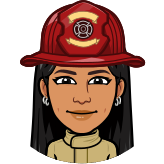Bio energetics
Cards (21)
- What type of reaction is photosynthesis?
- hydrogen carbonate? (1)
- contained oxygen? (1)
- measuring volume of oxygen produced? (1)
- the rate of photosynthesis more accurately? (2)
- source? (2)
- photosynthesis? (4)
- What is cellular respiration?
- Describe how energy released in respiration is used
- Explain how the body reacts to increased energy demand during exercise
- What happens when muscles are supplied with insufficient oxygen?
- is greater. (4)
- Explain why this is necessary. (2)
See similar decks
bio-energetics
Biology34 cardsBio-energetics
Biology61 cardsbio energetics
biology16 cardsBio energetics
Biology25 cardsbio energetics
biology86 cardsBio energetics
Biology143 cardsBiology - bio energetics
78 cardsbio energetics
Biology4 cardsbio energetics
biology14 cardsBiology - bioenergetics
Biology132 cardsBio-energetics B4
Biology65 cardsMetabolism
Biology > Bio energetics17 cardsRespiration
Biology > Bio energetics24 cardsExercise
Biology > Bio energetics15 cardsPhotosynthesis
Biology > Bio energetics29 cardsBiology (bio energetics) 🌱
55 cardsBio energetics
GCSE BIOLOGY32 cardsBIO ENERGETICS
GCSE Biology33 cardsPhotosynthesis practical
Biology > Bio energetics23 cardsLimiting factors
Biology > Bio energetics22 cardsBio energetics (respirations, photosynthesis)
☆ Biology35 cards
